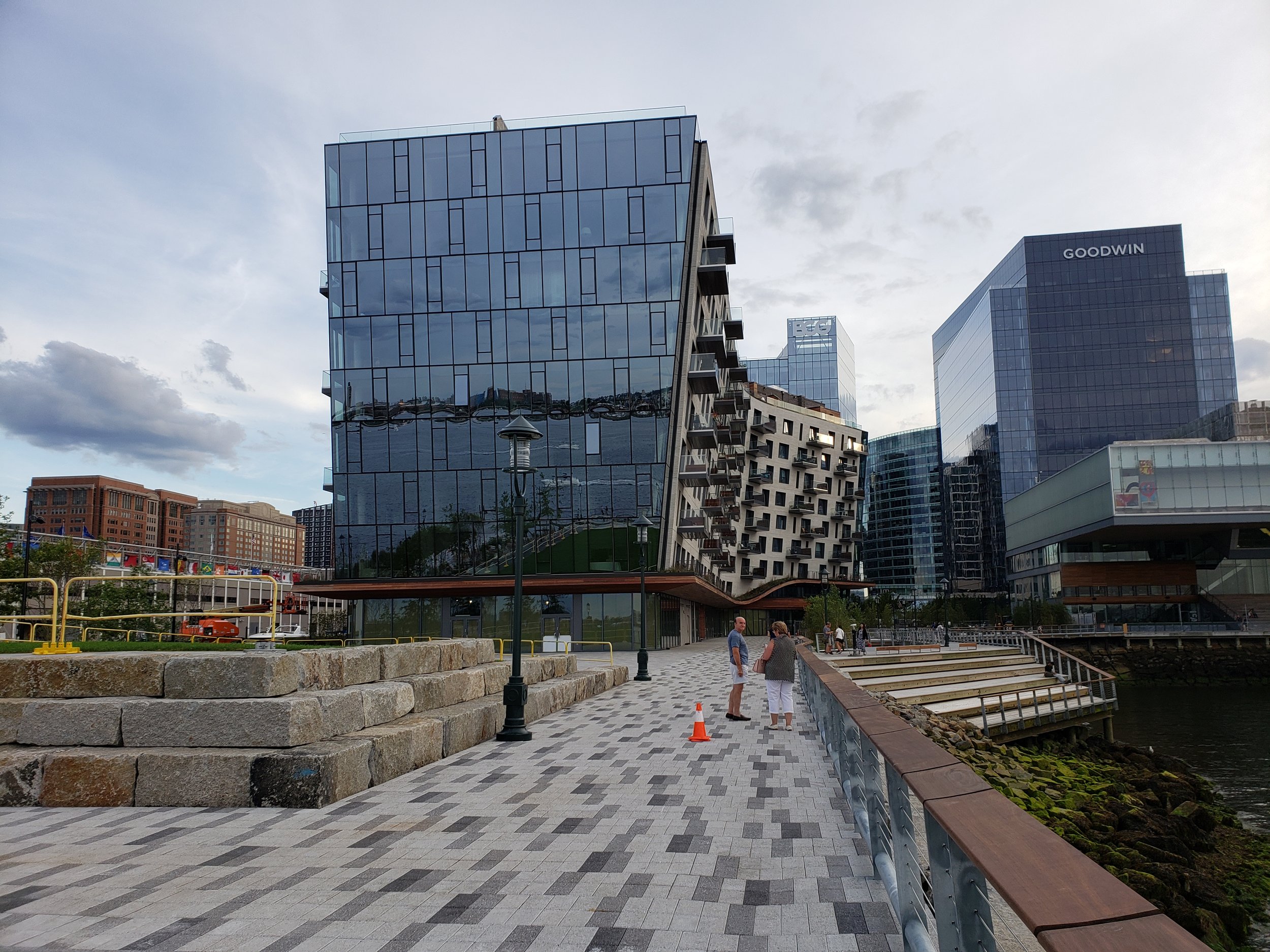
Challenges to Equitable and Effective Land Value Capture
Scholars and practitioners argue that local governments should capture rising land values to fund services and infrastructure, especially when the value results from public and collective action. Yet land value capture mechanisms are technically and politically challenging to implement. In this paper, we examine the four most prevalent land value capture mechanisms: (i) property and land taxes, (ii) real estate transfer taxes, (iii) betterment levies, and (iv) development charges. We propose a conceptual framework with seven design features to describe and compare the mechanisms, both across mechanisms within the same city and for a single mechanism across different contexts. Our analysis shows the superiority of property taxes as a tool for land value capture, and how contemporary scholarship advocating for development charges fails to recognize their drawbacks.

Bargaining for Benefits
Over the last 25 years, community benefits agreements (CBAs) have become a means for residents of low-income communities to demand a greater share of the benefits of urban development projects. CBAs are bargaining agreements that are signed by a developer that commit to delivering a range of material benefits to affected residents in exchange for community support for the proposed project. Much scholarly and broader public attention has been focused on how unequal developer-resident negotiating conditions undermine their responsiveness to community concerns. Rather than focusing on the fairness of the negotiation process, this paper focuses on how effectively CBAs are implemented throughout the duration of the agreement.

What Drives Adaptation?
While coastal local governments are accustomed to managing disruptions and uncertainty, they will face a pronounced challenge from sea level rise (SLR). SLR has the potential to reshape coastal communities through enhanced coastal flooding, saltwater intrusion, and the eventual loss of habitable land. In the long term, SLR could lead to migration away from low-lying coastal areas, reductions of tax revenue, demand for new infrastructure, and costly damages from extreme weather events, but even today recurrent high tide flooding is already delaying commuters in coastal areas.

Navigating the Complexities of Council Estate Regeneration
The redevelopment of Woodberry Down, one of the largest council estates in London, has been the subject of intense debate: touted in regeneration circles as a success story, critics have labeled it as yet another example of the pervasive state-led gentrification of London council housing. As we delved into the multifaceted story of Woodberry Down, we have uncovered a nuanced tapestry of victories and losses, forcing us to grapple with the question: is Woodberry Down an example of successful regeneration or is it yet just another casualty of “state-led gentrification”?

Compact City and Mayoral Entrepreneurship
The “compact city” is one of the key responses of urban policy for tackling the pressing challenges that cities are facing, such as environmental sustainability, economic viability, and social cohesion. Nonetheless, understanding Japan's compact city policies requires considering the historical trajectories of past events and decisions made by policymakers.

Collaborative planning in the context of deindustrialization
In the early 1990s, along the once-industrialized Mahoning River in Northeast Ohio, a small-town mayor faced a challenging set of forces when trying to solve local problems. With the steel industry long gone, the town’s future had been hindered by a series of low-level dams and industrial contamination in and along the river. These and other serious problems extended across the region – through other small, river-adjacent towns and nearby Youngstown.

Explaining Value Capture Implementation in New York, London, and Copenhagen
Value capture (VC) is widely cited as a method for local authorities to continue to provide urban public goods, such as public transport or measures to make neighborhoods more climate-resilient, in the face of fiscal stress. It is based on the idea that public investments create financial value in their surroundings that accrues to various beneficiaries. In theory, this value can be captured to fund those investments. However, the application of novel value capture strategies in practice remains limited. In this article, we aim to provide a better explanation of the implementation process of value capture as a strategy for funding public transportation infrastructure.

Community Benefits Through an Anchor
This project explores how anchor developers are contested throughout their planning and what the outcomes of these contestations teach us about accountability in urban governance. I look at this phenomenon through the case of the planning of the Obama Presidential Center (OPC), an anchor institution built by the Obama Foundation that features a museum of President Barack Obama’s presidency and a campus for Foundation programs. The Obama Foundation partnered with another nearby anchor, the University of Chicago, to plan the future OPC, which will be constructed in Chicago’s Woodlawn neighborhood. The University has a fraught relationship with Woodlawn residents due to its racist treatment towards Black residents spanning back through the 20th century.

“The councilors are the ones to blame”
When we engage with others, it is not on neutral ground. Instead, we interact on territories marked by power and social distinctions. Take neighborhoods, for example — these areas have social rules and purposes. Some of these rules may dictate that we are not allowed to step on the grass, that we should avoid going there at night, or that they are reserved for those who live there. As this illustrates, territories are not neutral; they shape who we are, how we should behave, for what purpose, and who has a say and ownership over space. Who determines the power dynamics within territories? Literature shows that territories are simultaneously created from above, where the state plays a determinant role and from below by those who inhabit them. However, some questions remain unanswered, particularly the state's role in creating territories vis-á-vis citizens' initiatives.

The Emergence of Environmental Justice in General Plans
Urban planning has an uneasy relationship with environmental justice. Poor planning decisions and discriminatory practices have historically heightened the burdens of environmental contamination in low-income neighborhoods and communities of color, in comparison to white, wealthy populations. Since the 1980s, activists have garnered some regulatory and scholarly support for changes to policy and planning processes, but urban planners have been slow to adopt an explicit EJ framework in land use policies. The planning profession, however, has the capacity to help ensure that future development does not repeat the unjust environmental outcomes of the past.

Innovation Districts
Innovation districts have gained attention as a fast-spreading urban economic development strategy, raising numerous questions. What are their distinguishing attributes? Are they a substantive policy innovation? Are they likely to succeed in fostering innovation and economic dynamism? Innovation districts have been strongly promoted (by the Brookings Institution and by the Global Institute on Innovation Districts among others) and are proliferating as a popular strategy for urban economic development.
![Getting STIF[ed]](https://images.squarespace-cdn.com/content/v1/6430525b8f320756ebe23070/1681744547644-FBZ3SVPDJTYTLFK8T4VP/image-asset.jpeg)
Getting STIF[ed]
Cities getting fleeced by professional sports teams on stadium and arena deals is nothing new. Nor is the underperformance of infrastructure megaprojects, which frequently go over budget, take longer than expected, or fail to meet revenue targets. Despite sports facilities representing some of the most financially significant and visible megaprojects that many cities will contemplate, there is often a disconnect between discussions of sports venues and the larger suite of infrastructure megaprojects.

Capitalizing on Collapse
A well-documented consequence of the recent foreclosure crisis was a pronounced dislocation in the single-family home market. Large institutional buyers backed with Wall Street capital emerged to capitalize on this dislocation. These firms acquired hundreds of thousands of single-family homes to create a pool of institutionally-owned single-family rentals (SFRs) in markets across the U.S. Existing research highlights both positive and negative effects of this investor activity. Analyses suggest that home purchases and subsequent investments by these actors have reduced vacancies and aided recovery from the housing bust, however, studies also show associations between institutional investment in SFRs and increases in home prices and evictions.

Roles and Motivations of Planning Professionals Who Promote Public Participation in Urban Planning Practice
Public participation in urban planning is a contested issue in China. Despite the official rhetoric of a harmonious society and changes in the legal framework that formalize the involvement of citizens in planning processes, many hold that the current practice is highly symbolic and aimed at placating the population rather than at empowering it. External forcing of the current system by environmental threats, social change and technological innovation may be more pertinent than the desire to change the system from within. However, this might overlook the role of the professionals. We expect our study to contribute to the international debates on the management of urban affairs in general and on public participation in urban planning in particular by exploring these in an authoritarian context.

Fear of the Unknown
A study conducted by park and recreation researchers at the universities of Arizona, Utah, North Carolina State and Clemson on the effects of neighborhood stigma on greenway use recently found that when greenways are located in neighborhoods occupied by residents of color, stigma may lead to avoidance, discrimination, and exclusion.

Arguing over Transportation Sales Taxes
Voter-approved local option sales tax (LOST) measures for transportation increasingly fill gaps between falling fuel tax revenues and growing transportation investment needs. There are concerns, however, over whether LOSTs are an equitable transportation finance mechanism. Equity is a critical concept in public policy and finance, and debates over resource distribution on fairness grounds are often contentious. Sales taxes are typically regressive—disproportionately burdening low-income residents—and disconnected from transportation system usage.

Sprawl in the Sunbelt
Sarasota County, Florida established a reputation as a leader in smart growth planning with adoption of its Sarasota 2050 plan in 2002. As an alternative to sprawl in the countryside, the plan envisions a new form of development composed of compact villages and open space protections for land beyond the county’s urban growth boundary. In 2003, Sarasota 2050 was recognized with the Charter Award from the Congress for New Urbanism.

Upzoning Chicago
Upzoning—a policy that increases the allowed scale of new construction—has recently attracted considerable attention from policymakers. States from California to Utah are considering legal changes that would require municipalities to increase the amount of new housing allowed to be built in certain neighborhoods. In Minneapolis, local officials have done what was previously thought politically impossible: Allow the construction of multi-family apartments in neighborhoods formerly zoned only for single-family homes.

The Changing Urban Political Order and Politics of Space
There is an increasing tension between the land development regime and the grassroots anti-growth coalition in Hong Kong, where public spaces have played a critical role. After the transfer of sovereignty in 1997, Hong Kong's society seemed to decline from prosperous to turbulent, which has aroused public concern in recent years. Many attribute the current dilemma to the regime transition from the British Hong Kong Government to the Hong Kong Autonomous Government and thus conclude that the transitional process of regime change is driven by exogenous factors.

A Tale of Two Neighborhoods
Two recent experiences have led me to conclude that we need to go further in analyzing the effect of neighborhood-level institutions on racial segregation across urban neighborhoods. As a board member for the University District Development Corporation (UDDC) in Little Rock, I participated in a decision last year to extend the UDDC’s boundaries to include a neighborhood with significantly lower income and a larger nonwhite population compared to that of the University District.